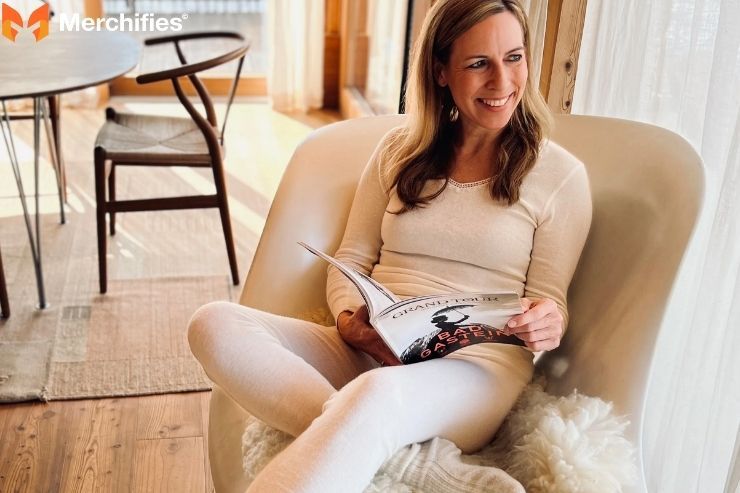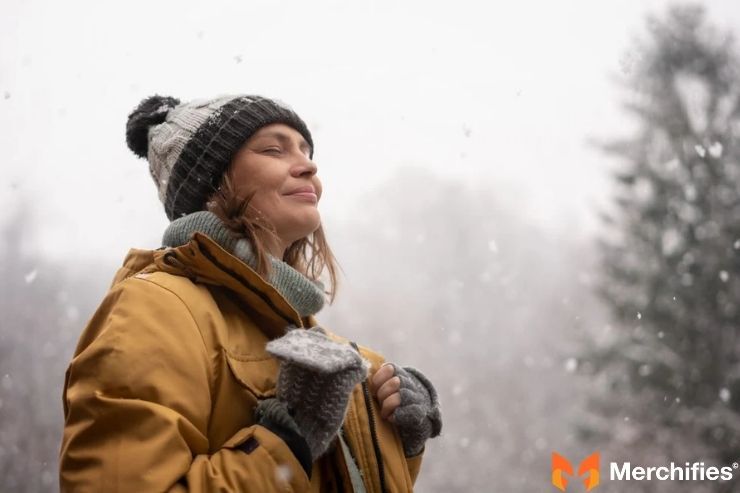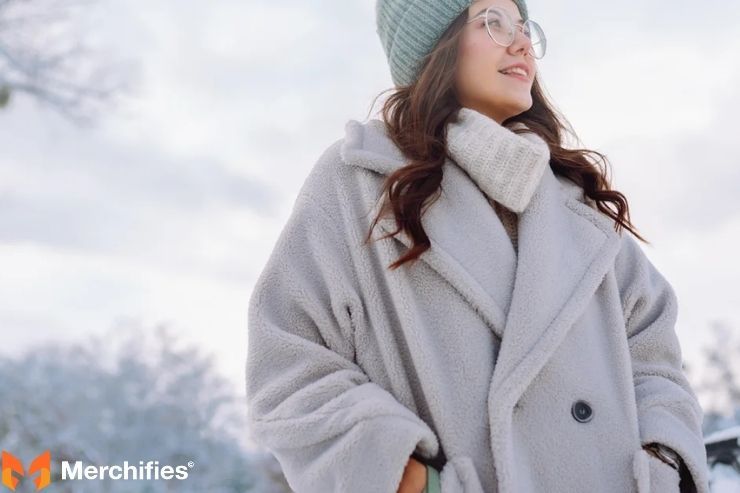How to Layer Clothes for Winter: The Ultimate Guide to Staying Warm & Comfortable
Stay cozy and stylish all winter with this ultimate guide to layering clothes. Learn how to combine base layers, mid-layers, and outerwear for maximum warmth without sacrificing style. Discover tips on choosing fabrics, mixing textures, and balancing comfort with fashion to create practical, chic winter outfits that keep you protected from the cold while looking effortlessly put together.

Blog Post Contents
Ditch the bulk, embrace the warmth! Are you tired of feeling either too cold, constantly shivering, or bogged down by too many heavy, restrictive clothes during winter? The secret to truly conquering cold weather isn't just about wearing a single thick garment; it's about mastering the art of layering. This smart approach allows you to adapt seamlessly to changing temperatures, manage moisture, and stay comfortably warm without sacrificing mobility or style. As a recognized expert in outdoor preparedness and cold-weather strategy, Mason Ellis Grant often emphasizes that understanding the principles of layering is the single most important step in enjoying winter safely and comfortably.
This comprehensive guide will unravel the science behind effective winter layering, introduce you to the three essential layers, help you choose the best winter clothing materials, and provide practical layering tips for various cold weather scenarios. By the end, you’ll not only know how to layer clothes for winter but also appreciate the superior warmth, moisture management, adaptability, comfort, and even style that this technique offers. Get ready to stay warm in winter like never before!
Why Layering Works: The Science of Staying Warm
Layering isn't just a trend; it's a scientifically proven method to manage your body temperature in chilly conditions. It leverages fundamental principles of physics to keep you toasty.
Trapping Air for Insulation
The primary reason multiple layers are more effective than a single thick coat is their ability to trap air. Each layer, and the spaces between them, creates tiny air pockets. These air pockets act as insulators, slowing down the transfer of heat away from your body. Think of it like a thermos: the vacuum between its walls keeps your drink hot by preventing heat from escaping. Similarly, layered clothing creates a barrier of trapped air, keeping your body heat close to you. This makes it far more efficient and adjustable than a monolithic, single garment that can leave you either overheated or under-protected.
Moisture Management is Key
One of the most critical, yet often overlooked, aspects of cold weather layering is moisture management. When you exert yourself, even in cold temperatures, your body sweats to cool down. If this sweat remains on your skin or saturates your clothing, it rapidly draws heat away from your body through evaporative cooling. This can quickly lead to feeling chilled and, in extreme cases, hypothermia. Effective layering combats this by utilizing wicking fabrics designed to pull moisture away from your skin and transfer it through the layers, allowing it to evaporate from the outer surface.
Adaptability to Changing Conditions
Winter weather is notoriously fickle. A morning chill can give way to a sunny afternoon, or your activity level might shift from a brisk walk to standing still. A major advantage of layering is its inherent adaptability. You can easily add or remove garments as temperatures fluctuate, as your activity level changes, or as you move between indoor and outdoor environments. This precise control over your personal microclimate ensures you remain comfortable without ever feeling too hot or too cold. It’s the best winter layering strategy for dynamic conditions.

The Three Essential Layers: Your Winter Wardrobe Foundation
To truly master how to layer clothes for winter, you need to understand the function of each of the three core layers. Think of them as a system, each playing a vital role in keeping you warm, dry, and protected.
Layer 1: The Base Layer (Wicking Wonders)
The base layer is your first line of defense, worn directly against your skin.
- Purpose: To wick moisture away from your skin and provide a foundational layer of warmth. By moving sweat off your skin, it prevents you from feeling cold and clammy.
- Key Characteristics: It should fit snugly (but not restrictively) to maximize contact with your skin for efficient wicking. It needs to be breathable and, crucially, quick-drying.
Best Materials:
- Merino Wool: A natural superstar. It offers excellent warmth-to-weight, is naturally odor-resistant, incredibly breathable, and retains some warmth even when damp. It's often soft and non-itchy.
- Synthetic (Polyester, Polypropylene): These materials are engineered for performance. They are fast-drying, highly durable, and often more affordable than merino wool. They excel at wicking moisture.
- Avoid: Cotton is the enemy in cold weather. It absorbs moisture like a sponge, stays wet for a long time, and rapidly cools you down, posing a risk of hypothermia.
- Garment Examples: Thermal shirts (long-sleeve), thermal leggings, performance underwear.
- When to Wear: Essential for virtually all cold weather activities, especially those involving physical exertion like skiing, hiking, or even just shoveling snow.
Layer 2: The Mid-Layer (The Insulator)
This is your core warmth provider, worn over your base layer.
- Purpose: To provide the primary insulation by trapping body heat. This is where most of your warmth comes from.
- Key Characteristics: The material should have "loft" – meaning it's fluffy and able to trap a significant amount of air. It should also be breathable to allow moisture vapor to continue moving outwards, and relatively lightweight for comfort.

Best Materials:
- Fleece (Polyester): A common, affordable, and highly effective insulator. It offers good warmth and dries relatively quickly.
- Different weights: Fleece comes in various thicknesses, typically denoted by "weight" (e.g., 100-weight for light warmth, 200-weight for moderate, 300-weight for heavy insulation). Choose based on expected temperatures and activity levels.
- Down: Renowned for its unparalleled warmth-to-weight ratio and high compressibility, making it excellent for jackets.
- Fill power: This indicates the quality of the down. Higher fill power (e.g., 800-fill) means more warmth for less weight.
- Synthetic Insulation (Primaloft, Thinsulate): Engineered to mimic down, these insulations perform better when wet than down does. They are also hypoallergenic and often more budget-friendly.
- Wool (Thicker knits): Excellent natural insulation, often used in sweaters or thicker mid-layer garments.
- Garment Examples: Fleece jackets/pullovers, down vests/jackets, synthetic insulated jackets, thick wool sweaters.
- When to Wear: The core warmth layer that you adjust based on the ambient temperature and your exertion.
Layer 3: The Outer Layer (The Shell/Protector)
The outermost layer is your shield against the elements.
- Purpose: To protect you from external elements such as wind, rain, and snow. It's crucial for staying warm in winter.
- Key Characteristics: Must be windproof, water-resistant or fully waterproof, and ideally breathable to prevent moisture buildup from within.
Types of Outer Layers:
- Hard Shells: These are fully waterproof and windproof, offering maximum protection from precipitation. They are durable but often less flexible and breathable than soft shells (e.g., jackets with Gore-Tex or eVent membranes).
- Soft Shells: More breathable and flexible than hard shells, offering good wind protection and water resistance, but typically not fully waterproof. Great for active use in drier cold conditions.
- Insulated Shells: These combine the outer protective layer with an insulating mid-layer into a single garment. Convenient but less adaptable if you need to shed insulation without losing weather protection.
- Best Materials: Gore-Tex, other proprietary waterproof/breathable membranes (e.g., HyVent, DryVent), treated nylons/polyesters.
- Garment Examples: Waterproof jackets, ski jackets, parkas, windbreakers.
- When to Wear: Whenever you face inclement weather, strong winds, or any form of precipitation. It's the final piece in how to layer clothes for winter.

Beyond the Core: Essential Accessories for Winter Layering
While the three core layers are fundamental, ignoring your extremities is a common mistake that can significantly compromise your warmth and comfort.
Headwear
- Why: You can lose a significant amount of body heat through your head – up to 10% in some estimates, although this varies. Protecting your head helps maintain overall body temperature.
- Options: Beanies (wool or fleece are excellent), balaclavas (for extreme cold, covering face and neck), and headbands (for milder days or high activity).
Hand Protection
Why: Your hands and fingers are particularly vulnerable to cold and frostbite due to reduced blood flow in cold conditions.
Options:
- Gloves: Offer better dexterity.
- Mittens: Generally warmer than gloves because your fingers share body heat.
- Layered glove systems: A thin liner glove (wool or synthetic) inside a waterproof, insulated outer glove or mitten provides versatility and superior warmth.
- Materials: Look for wool, fleece, or synthetic liners, with waterproof and insulated outers.
Footwear & Socks
- Why: Keeping your feet dry and warm is paramount for comfort and safety in winter.
- Socks: Just like base layers, merino wool or synthetic blends are ideal. Absolutely avoid cotton socks, which will leave your feet cold and blistered. For added warmth, consider layering socks: a thin liner sock under a thicker, insulated sock.
- Boots: Invest in waterproof, insulated winter boots with good traction. Ensure they have ample room for your chosen socks without being too tight, which can restrict circulation.
Neckwear
- Options: Scarves (classic and stylish), or neck gaiters/buffs (fleece or merino wool) offer excellent protection for your neck and lower face, preventing heat loss and blocking wind.

Mastering Your Winter Layers: Practical Tips & Common Mistakes
Knowing the layers is one thing; using them effectively is another. Here are some layering tips and pitfalls to avoid.
Don't Overdress (Start Cold)
This is a common mistake. Many people bundle up so much before stepping outside that they immediately start to sweat. As Mason Ellis Grant explains, "If you're not a little bit cool when you first step out for an activity, you've probably put on too much." Sweating in cold weather leads to damp clothing, which then cools your body down rapidly. Aim to feel slightly cool when you first venture out for any physical activity, knowing your body will generate warmth as you move.
Adjust for Activity Level
Your layering needs will change dramatically based on how active you are.
- Higher activity: You'll generate more body heat, so you'll need fewer or lighter mid-layers. Prioritize breathability and moisture-wicking.
- Lower activity: If you're standing still, sitting, or moving slowly, you'll need more or warmer layers, especially in the mid-layer, to compensate for less internal heat generation.
Consider the Wind Chill Factor
Wind makes cold temperatures feel much colder by stripping away the layer of warm air trapped near your body. This is why a good outer shell that is genuinely windproof is indispensable. Even on a moderately cold day, a strong wind can make you feel significantly colder if your outer layer isn't up to the task.
The Importance of Fit
Each layer should fit comfortably. Base layers should be snug to wick effectively. Mid-layers should allow air to be trapped but not be so bulky that they restrict movement or compress the air out of the insulation. Outer layers should fit over everything without being too tight (which can restrict blood flow and reduce insulation) or too loose (which allows cold air to penetrate). Allow for air pockets, but avoid excessive bulk that hinders movement.
Pack an Extra Layer
Temperatures can drop unexpectedly, or your activity might change. It's always a good practice to carry a light extra layer, such as a thin fleece or an insulated vest, especially for outdoor adventures. This extra piece can be a lifesaver if you find yourself getting unexpectedly cold.
Don't Forget Your Legs
While much of the focus is often on the torso, your legs are equally susceptible to cold. For prolonged outdoor exposure or very cold conditions, reinforce the importance of wearing a good base layer (thermal leggings) under your pants or ski trousers. This is a critical part of how to layer clothes for winter effectively from head to toe.

Layering for Specific Winter Scenarios
Applying the principles of how to layer clothes for winter can be tailored to different situations.
Casual Daily Wear (Urban/Commute)
- Focus: Comfort, style, and moderate warmth for urban environments and short outdoor exposures.
- Example combination: A lightweight merino or synthetic base tee, a fashionable wool sweater as your mid-layer, a stylish yet insulated jacket (perhaps a puffy or a chic parka) as your outer shell, and don't forget a trendy scarf and a warm beanie.
High-Activity Outdoors (Skiing, Hiking)
- Focus: Prioritize moisture-wicking, breathability, and freedom of movement to manage sweat and stay comfortable during exertion.
- Example combination: Performance base layers (merino or synthetic) top and bottom, a mid-weight fleece or a light synthetic insulated jacket as your mid-layer, and a waterproof/breathable hard shell jacket and pants as your outer protection.
Extreme Cold/Low Activity (Spectating, Ice Fishing)
- Focus: Maximize insulation, especially when stationary for long periods, where generating body heat is minimal.
- Example combination: Heavyweight base layers (merino or synthetic), a thick down jacket or a heavy synthetic insulated jacket as a robust mid-layer, and a heavy-duty parka with significant insulation as your outer layer. Pair this with insulated, waterproof boots and layered hand/head protectio

Conclusion
Mastering how to layer clothes for winter is undoubtedly the most effective way to manage your body temperature and remain comfortable in cold conditions. By understanding the roles of the base, mid, and outer layers, and by making smart choices in materials and accessories, you unlock unparalleled warmth, superior moisture management, and critical adaptability. This knowledge empowers you to stay comfortable and safe, whether you’re commuting through an urban chill, hitting the slopes, or simply enjoying a quiet winter evening outdoors. This comprehensive guide, informed by the deep expertise of Mason Ellis Grant, ensures you’re equipped with the practical knowledge to conquer any winter day. Embrace the winter, confidently warm!